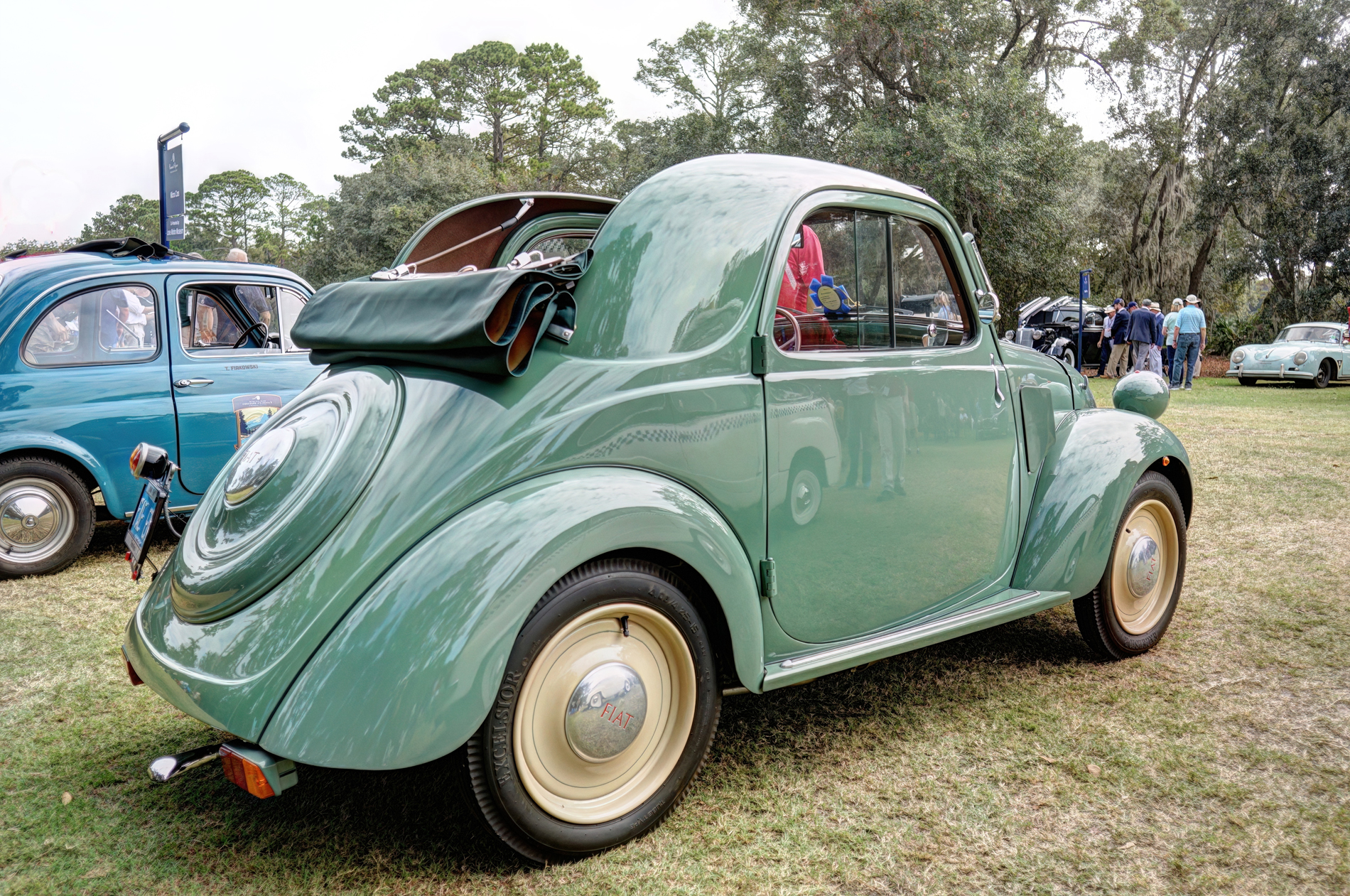
The 1948 Fiat Topolino is a charming and iconic microcar that played a significant role in making personal transportation more accessible in post-war Europe. Known as one of the smallest cars of its time, the Topolino, meaning "little mouse" in Italian, is beloved for its practicality, efficiency, and endearing design.
Background
- Manufacturer: Fiat (Fabbrica Italiana Automobili Torino)
- Production Years: 1936–1955
- Model Year: 1948
- Significance: The Fiat Topolino was one of the first affordable cars for the masses, solidifying Fiat's reputation for building practical, efficient vehicles.
Specifications
- Engine:
- Type: 569 cc, inline-4, water-cooled engine.
- Output: Approximately 16 horsepower at 4,000 rpm.
- Features: Simple, robust design optimized for economy and reliability.
- Transmission: 4-speed manual gearbox with synchromesh on the top gears.
- Chassis: Ladder frame with lightweight construction for efficiency.
- Suspension:
- Independent front suspension with a transverse leaf spring.
- Rear: Live axle with leaf springs.
- Brakes: Hydraulic drum brakes on all four wheels.
Performance
- Top Speed: Approximately 50–55 mph (80–88 km/h).
- Fuel Efficiency: Around 40–50 miles per gallon, making it one of the most economical cars of its time.
- Driving Dynamics:
- The Topolino's lightweight design and compact size made it nimble and easy to maneuver in urban environments.
- Modest power output suited the car for city and rural roads, though not ideal for high-speed travel.
Design and Features
- Exterior:
- Compact, rounded body with a distinctive sloping hood.
- Signature front-mounted headlights, which gave the car its "mouse-like" appearance.
- A convertible fabric roof (on some models) allowed for open-air driving.
- Two-door configuration with seating for two adults and minimal luggage space.
- Interior:
- Spartan but functional, with basic instrumentation and controls.
- Folding seats for added practicality in the limited interior space.
- Simple materials and finishes to keep costs down while ensuring durability.
Variants
- Cabriolet: Featured a foldable fabric roof for a more open driving experience.
- Van/Utility: Popular with small businesses, featuring increased cargo capacity.
- Later Models: Post-1948 models introduced minor updates, including improved suspension and slight styling tweaks.
Historical Context
- Designed by Dante Giacosa, the Topolino was created to offer affordable transportation to a recovering Europe during and after the Great Depression.
- Despite its small size, the car was engineered with attention to detail, combining functionality with an appealing design.
- Production continued into the 1950s, with over 500,000 units sold worldwide.
Legacy
- Cultural Impact: The Fiat Topolino became a symbol of resilience and ingenuity in post-war Europe.
- Collector Appeal: Today, the Topolino is a beloved classic, cherished by enthusiasts for its historical significance and charm.
- Influence: The Topolino set the stage for Fiat's later successes, including the iconic Fiat 500.
Summary
The 1948 Fiat Topolino is more than just a car; it's a piece of automotive history that represents innovation, accessibility, and a post-war spirit of progress. Its charming design, practicality, and legacy continue to captivate collectors and classic car enthusiasts worldwide.
Taken at the Hilton Head Concours
You may purchase a print of the 1948 Fiat Topolino in our dElegance 2024 online gallery.
The Vintage Automobile Article Index



